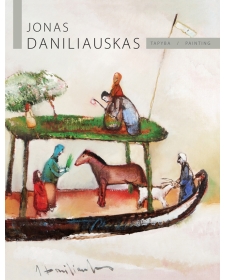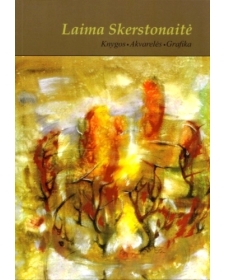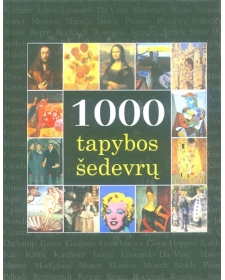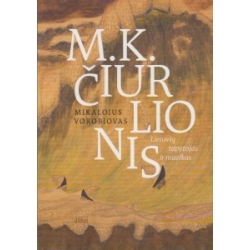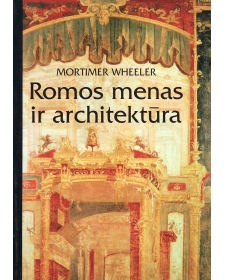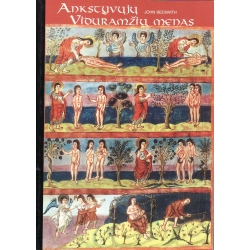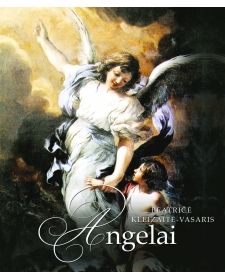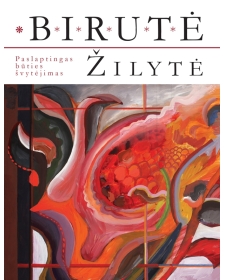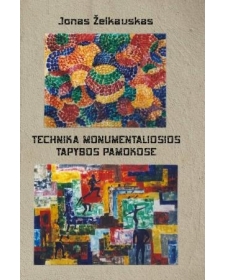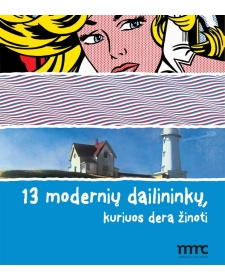Prekių nėra
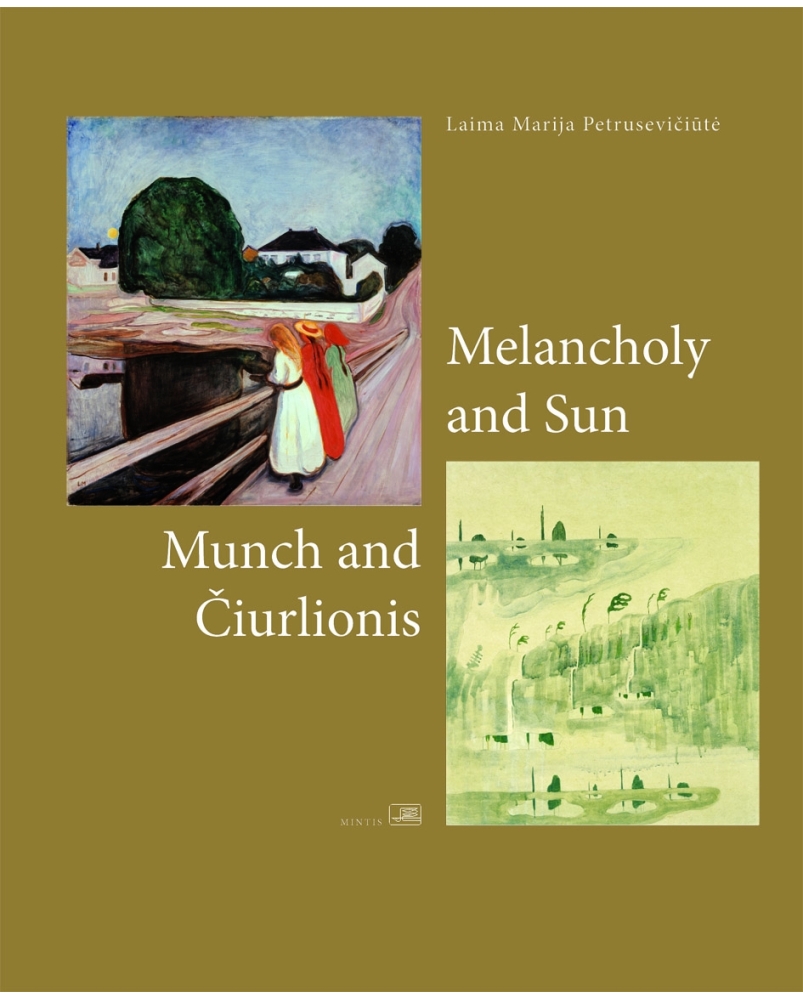 Padidinti
Padidinti Munch and Čiurlionis: Melancholy and Sun (EN)
Nauja prekė
- Autorius Laima Marija Petrusevičiūtė
- Formatas (mm) 243x290
- Įrišimas minkštas
- Psl. 168
- ISBN 978-5-417-01004-0
- Leidimo metai 2010
- Leidykla „Mintis"
Dėmesio: Paskutinė prekė atsargose!
- Parašyti atsiliepimą
Charakteristikos
| ISBN / EAN | 978-5-417-01004-0 |
| Autorius | Laima Marija Petrusevičiūtė |
| Leidimo metai | 2010 |
| Įrišimas | minkštas |
| Psl. | 168 |
| Formatas (mm) | 243x290 |
| Leidykla | „Mintis" |
Apie prekę
EN Few last copies left, book cover may have scratches or other damages.
Lithuanians have the greatest respect for the culture and artistic traditions of their northern neighbour. They will always remember Norway as a country which was among the first to support them, two times, on the hard road to independence. The histories of our two nations have many similarities, as well as differences, just like the whole civilisational context and the world around us. One nation was known as the West European ‘maritime Vikings’, the other as the East European ‘land-based Vikings’.
Laima Petrusevičiūtė’s attention focuses on two artists, Čiurlionis and Munch, who are considered to be powerful symbols of the spiritual revival of the Lithuanian and Norwegian nations, with their lives and art blazing the trail to independence.
This exceptional book, uncommonly for our art criticism, deserves the strongest praise. It is significant from various points of view, and I would like to point out the most important ones. First of all, this study, which is concise and yet full of subtle observations, creates a solid bridge of understanding not only between key symbols in Lithuanian and Norwegian art, but also between our two nations. Also, it expands the traditional field of research, and connects Čiurlionis’ work with the art movements of northern countries more daringly than in the work of other art critics.
Once you plunge into the text, it becomes evident that you are starting a dialogue not with a novice art critic who is desperate to demonstrate her erudition, but with a connoisseur of art criticism who has already said what she has to say and proven her academic qualifications, and who has deep intellectual ambitions to deal independently with complex questions of art criticism.
Laima Petrusevičiūtė, reasonably and consistently in comparison with other critics, reveals for the first time Čiurlionis’ art as a part of the northern European context waiting for broader recognition, and at the same time proves the importance of his work in the development of art at the turn of the 19th and 20th centuries.
This book will be extremely interesting to anyone who is interested in Western art of the end of 19th and the beginning of the 20th centuries. It certainly helps us to understand better the place that the works of Čiurlionis and Munch occupy in the development of Western art, giving us an exceptional opportunity to understand the creative depth of these insufficiently recognised masters.
“Čiurlionis entered early into my life: I can well remember from my childhood those amber-coloured pictures, and my first steps into his mysterious, alluring and mystical world.
When I became a student, the space that had previously been taken up by Čiurlionis was occupied by other artists and by other forms of art. In those days, I was interested in ideas and experiences that were new to me. But Čiurlionis was still with me, and I had not exhausted my acquaintance with him.
Only when I began to teach at the Vilnius Academy of Art, and while I was working as a researcher, did I begin to build on my earlier lessons in Čiurlionis as the pioneer of early 20th-century Lithuanian art. Together with art students and students of art criticism, I often used to take the train from Vilnius to the M.K. Čiurlionis Museum in Kaunas in order to attend seminars about him. We held our seminars right in front of his pictures: more with him than about him. I still like to arrange those direct meetings, with the works of art confronting speculative attitudes to art in the flesh ...
When I visited the Munch Museum in Oslo at Christmas in 1989, and acquired a facsimile edition of his woodcut ‘The Kiss’, and when a year later I returned to my Norwegian fate in Oslo, where I have spent the last twenty years, I had no idea that Čiurlionis and Munch would come together in a book written by me. I only knew that they were very interesting and very important to me.
For a long time I have loved both of the heroes of this book, and so I cannot lay any claim to objectivity.
The comparative analysis was a tool for me to juxtapose and bring closer to each other the worlds of Čiurlionis and Munch. Why use this method? I believe strongly that the essence of creation is much clearer and purer to the researcher himself, and later to the reader, when a comparative approach is applied, which helps us to perceive the difference and uniqueness of every fact, just as two different shades of a colour become clearer when they are brought closer to each other, even though at first sight they might look almost the same.
From that point of view, the comparative method becomes a means opposite to levelling: grinding a multitude of crystals makes them all equally smooth, greyish and similar. However, when two of them are carefully juxtaposed and compared, then in your perception you may polish their diamond facets to perfection.
And one last word: I want to express my debt to my childhood friend Perla Trečiokaite-Vitkuvienė, who was formerly a senior editor with Mintis publishers, for her help in realising the publication of this book. Unfortunately, it will never be read by her ...”
Laima Marija Petrusevičiūtė
LT Paskutiniai egzemplioriai, knygų viršeliai gali turėti įbrėžimų ar kitų pažeidimų.
Novatoriška lyginamoji Čiurlionio ir Muncho kūrybos analizė atskleidžia šių menininkų kūrybos vietą Vakarų modernėjančios dailės raidos procesuose ir jų kūrybos gelmines prasmes.
Tiek Munchas, tiek Čiurlionis, kurdami svetimšalių pavergtose tėvynėse, vienodai giliai išreiškė savo tautos laisvės siekius, formavo tautinius idealus, jų laisvės ilgesį, kūrė romantinį idealizuotą savo tautos dvasinį veidą, ateities vizijas, kovotojų už savo idealus vaizdinius, tačiau, nuostabiausia, kad netrukus iš romantinių svajų versmių išsiliejo jėgos, kurios šį vaizduotės sukurtą pasaulį pavertė realybe.
„Lietuviai su gilia pagarba žvelgia į savo šiaurinės kaimynės kultūros ir meno tradiciją, aiškinasi jos savitumus, prisimena Norvegiją, vieną pirmųjų jau du kartus mus parėmusią sunkiame nepriklausomybės atgavimo kelyje. Mūsų tautų istorijos keliai daug kuo panašūs ir skirtingi, kaip ir supantis kraštovaizdis, civilizacinis kontekstas. Vieni buvo vakarinės Europos dalies jūros vikingai, kiti - Rytų Europos „sausumos vikingai".
Čiurlionis ir Munchas - didieji lietuvių ir Norvegų tautų dvasinio atgimimo simboliai, savo kūryba ir gyvenimu tiesę kelius į nepriklausomybės atgavimą.
Apie šią nekasdienę mūsų dailėtyroje knygą galima pasakyti daug gražių žodžių. Ji reikšminga įvairiais požiūriais, iš kurių išskirčiau kelis svarbesnius: pirmiausia, ši glausta, bet ir subtilių įžvalgų kupina studija tiesia savitarpio supratimo tiltus ne tik tarp dviejų lietuvių ir norvegų dailės simbolių, bet ir tarp mūsų tautų. Iš kitos pusės, ji išplečia tradicinį čiurlionistikos lauką ir drąsiau nei ankstesni tyrinėtojai lietuvių menininko kūrybą susieja su Šiaurės kraštų dailės procesais
Vos apsinėręs į teksto magmą iškart pajunti, kad susidūrei ne su pradedančiu dailėtyrininku, visaip demonstruojančiu savo erudiciją, o su jau tarusiu savo žodį dailėtyroje specialistu, kuris turi solidų akademinį pasirengimą ir intelektines ambicijas savarankiškai svarstyti sudėtingas komparatyvistinės dailėtyros problemas.
Laima Petrusevičiūtė pirmą kartą argumentuotai ir nuosekliau nei kiti dailėtyrininkai įtraukia Čiurlionio kūrybą į kitus svarbius platesniam pripažinimui Šiaurės Europos dailės kontekstus ir parodo jo kūrybos svarbą XIX ir XX amžių sandūros Vakarų daile. Ji padės geriau suprasti Čiurlionio ir Muncho kūrybos vietą Vakarų modernėjančios dailės raidos procesuose ir suvokti šių nepankamai įvertintų menininkų kūrybos gelmines prasmes."
Prof.habil.dr. Antanas Andrijauskas


